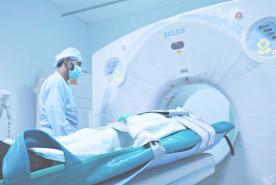March 18, 2020
Dialysis patients should NOT stop their treatments during the COVID-19 outbreak. To protect dialysis patients from the coronavirus, which causes the disease, COVID-19, the Centers for Medicare and Medicaid Services (CMS) and the Centers for Disease Control and Prevention (CDC) have given dialysis centers new information to stop the virus from spreading. Dialysis patients are at a high risk for serious complications, even death, from the virus.
This is what your dialysis center should do to protect you:
- Check and follow all patients, including home dialysis patients, staff, and visitors who may have had contact with the coronavirus, or with people who have symptoms of COVID-19. For example, the center should:
- Check you for fever or any breathing or respiratory (lung) symptoms
- Ask if you live in an area where people have COVID-19
- Ask if you have had contact with someone who is being checked for COVID-19, or if you have recently been in another country where COVID-19 has spread.
- Centers should take patients’ temperatures at check-in.
- Find, triage (give the right type of care based on symptoms), and keep patients who may have the disease away from others who don’t. This means a patient with respiratory symptoms should be dialyzing six feet away in all directions from healthy patients. In some centers, patients with respiratory symptoms may be dialyzed in a separate area.
- Communicate often and openly with patients and their representatives, including family and other care givers, to meet the needs of each patient.
- Call your local or state health department if the dialysis center has a very high number of patients with respiratory illness.
Dialysis centers should identify patients with signs and symptoms of respiratory infections before they enter and do the following:
- Give a mask to patients with respiratory symptoms. These patients should wear the mask from check-in and until after they leave the center.
- Tell patients to call ahead to report respiratory symptoms.
- Put signs at the entrance to let patients know they should tell the staff if they have respiratory symptoms.
- Give patients and staff information about hand hygiene (how to keep hands clean) and other ways to stay safe. Patients should get this information in the language they know best. Centers should also have tissues, hand sanitizer, and trash bins with foot pedals.
- Don’t allow visitors with signs/symptoms of infection to enter the dialysis center.
- Give sick time to staff with respiratory symptoms or other signs of illness. It’s not safe for them to be around patients.
- Make separate waiting areas for sick patients that are at least six feet from other patients. Healthy patients can wait outside or in their cars until it’s their turn to be seen.
- Separate healthy and sick patients by no less than six feet in all directions. Ideally, sick patients will be dialyzed in a separate room.
- Group multiple dialyzing patients suspected or confirmed for having COVID-19, along with the staff caring for them, in the same unit or on the same shift.
- Use cleaning procedures that kill the coronavirus, along with all routine cleaning and disinfection procedures.
- Transfer any patient too sick to be treated in a dialysis unit. The transport service and receiving facility should be told about the patient’s condition.
- Monitor home dialysis patients monthly.
If your dialysis center is not following these guidelines, you should call your local ESRD Network. Find your local ESRD Network here.

















